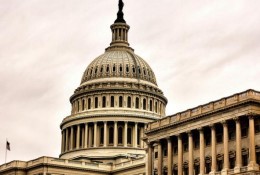What Happened During the Last Shutdown

The Republican-controlled House would like to keep the government running until December in exchange for defunding the Affordable Care Act, and the Democrat-controlled Senate is prepared to reject a budget bill that would delay the president’s health care law. With no compromise in sight at the moment, the government will shut down and hundreds of thousands of workers will be furloughed without pay, among other economic ripple effects. Here is what happened during the last shutdown:
The last shutdown, from December 15, 1995, until January 6, 1996, is also the longest in U.S. history. It had more palpable effects. In late 1995, the Clinton administration and the Republican opposition, led by House Speaker Newt Gingrich, sparred over balancing the government’s budget. Clinton was open to a long-term balancing plan but threatened to veto any further cuts. Gingrich did not yield and sent back a resolution that Clinton shot down — resulting in a three-week shutdown which kept 800,000 government employees at home, and forced others to work without pay (they were later paid retroactively). According to a Congressional Research Service report, the National Institutes of Health couldn’t take in new patients; bankruptcy cases got put on hold; 368 national parks closed; passports were not issued; the Bureau of Indian Affairs shut its doors; veterans’ services came to a halt. The shutdown proved hugely unpopular. Gingrich bore most of the blame, perhaps because he said he’d made negotiations more difficult after the president made him get off Air Force One from the back.
This time around, though, polls show that Americans would blame both Democrats and Republicans for the shutdown.
Photo: Phil Roeder
Support The Billfold
The Billfold continues to exist thanks to support from our readers. Help us continue to do our work by making a monthly pledge on Patreon or a one-time-only contribution through PayPal.
Comments